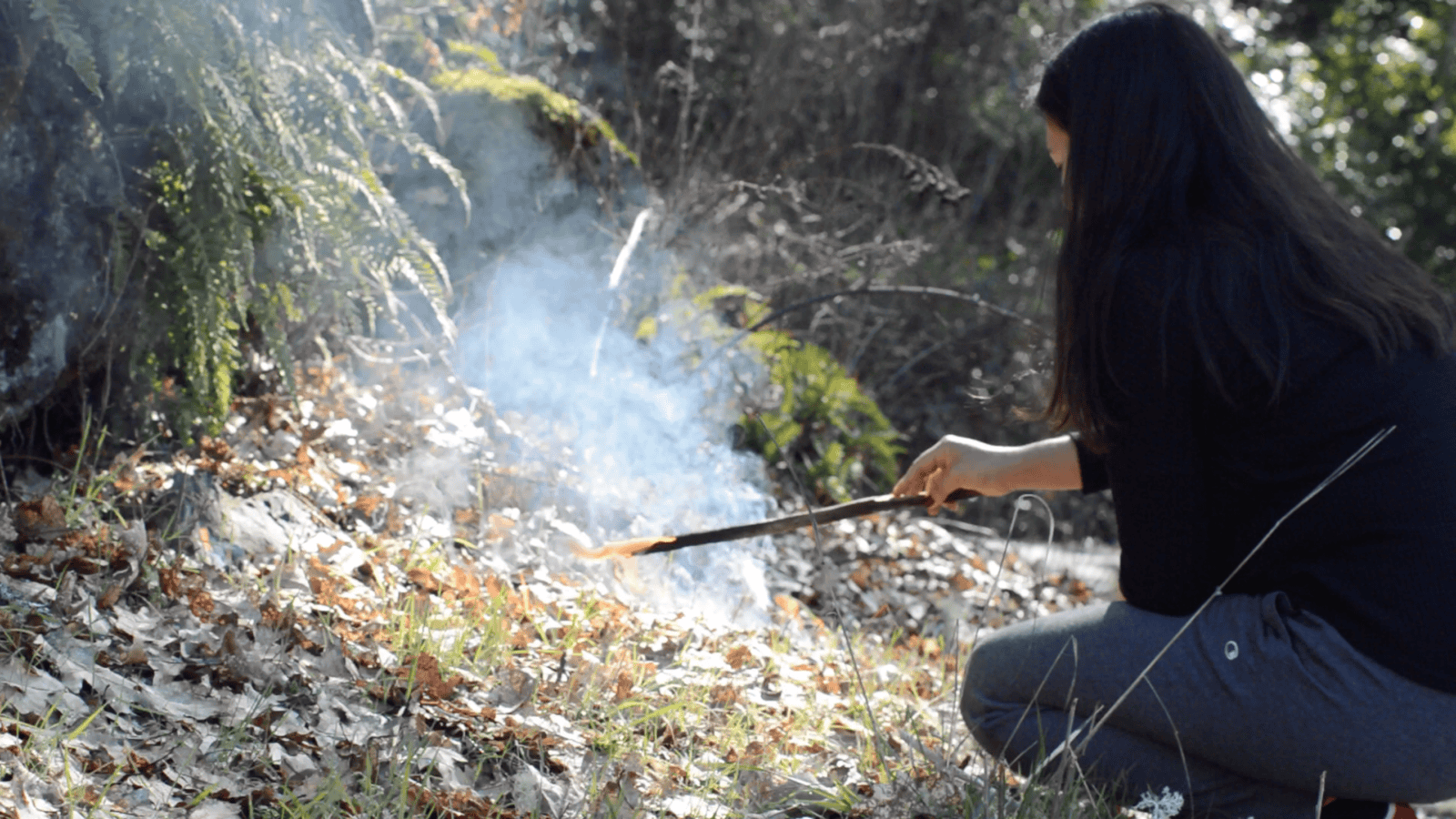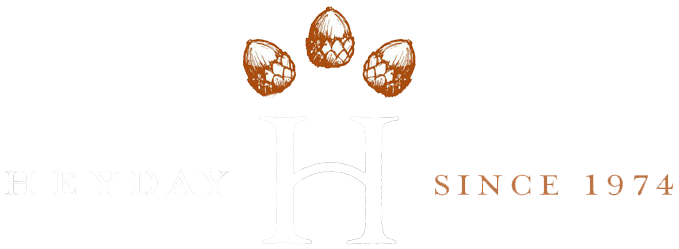

Karuk Tribe Dept. of Natural Resources
“Analisa is lighting a prescribed fire/traditional burn using a pitch stick” (Photo by Alex Watts Tobin, Karuk Department of Natural Resources THPO)
INDIGENOUS WISDOM AND WESTERN SCIENCE CREATES “A Good Fire”
By Jeanne Ferris
Cultural fires tended by California Natives are a sacred ceremony and have been for centuries. Their intrinsic understanding of sustainable land management and perpetuating heritage-rich flora and fauna used for basketweaving, land management, and food gathering has sustained them forever.
Basketweavers have produced generations of fire tenders who respect the flame and its power as a good fire. The California Natives flourished in living naturally within all the ecological systems. Their tradition of prescribed burns is referred to as Indigenous Wisdom or Native Science but hereafter, Traditional Ecological Knowledge (TEK).
In the last three years, this state has had many bad fires: The most recent Slater Fire destroyed about 150 homes at Happy Camp. There were two fatalities reported. Happy Camp is not a reservation, but public land known as the Klamath National Forest. These are ancestral grounds for the Karuk tribe, the second-largest in California, and one of the more economically challenged.
The Karuk tribe knew that fire was coming long before the downed PacifiCorp utility power line (under investigation) made the early morning sky a dark orange, clogging the air and lungs with black smoke. Elders and families evacuated on September 7, 2020. It remains at 32 percent contained. So far, the merging Devil Fire with Slater seems to be staying in the backcountry, away from domiciles and structures.
“In 2014, we presented a strategic plan utilizing TEK around Happy Camp to US Forest Service (USFS) Supervisor Patty Grantham,” Craig Tucker said. “She rejected it. We have had success with other forest supervisors who believe that western science and TEK can be a collaborative defense. What stops wildfires are prescribed burns. California is in a desperate place and these policies of fire suppression and dropping C-130 damages air quality, wildlife habitats and reforestation.”
A voicemail left at Supervisor Grantham’s office requesting a statement remain unanswered. An affiliate said that “Grantham was attached to Washington.”
As a 16-year policy advocate for the Karuk tribe, Tucker is well-versed in litigation, “I sure wish the eyewitness who saw the utility power line go down would step forward. Those power lines were old and not maintained. It was 100 degrees that day, with 30 m.p.h. winds and they [PacifiCorp] refused to turn off the power. This is not sitting well with a lot of tribal members.”
Of particular importance, PacifiCorp’s parent company is Berkshire Hathaway Energy. Berkshire Hathaway’s ultimate top dog is billionaire tycoon, Warren Buffett. He has been in the Yurok tribe’s legal crosshairs regarding four aging dams operating under an expired license on Klamath River. Decades of successful litigation had ensued with PacifiCorp, and now Happy Camp’s demise demands accountability.
“Relief efforts by the Red Cross funded hotel rooms for some of the survivors,” Regina Chichizola, Orleans resident said. She is an advocate and board member for the non-profit, Save California Salmon. “Others are living with relatives under already overcrowded conditions in addition to this pandemic.”
The Karuk tribe website has an Emergency Relief Services for Happy Camp survivors with a non-perishable food bank. The tribe has invited non-Native Happy Camp survivors to participate if in need. No application and no information is requested. Just access to safe, healthy food, as stated on their website. Also: Please don’t feel like you are taking from someone else by coming to our centers. This is an emergency situation and we are here to help everyone. Many people across the country are donating food and items to relieve the burden.
So far, two donation distribution centers receive Red Cross deliveries with assistance from the Yuroks and other donors across the county—more is expected in the coming weeks. The Karuk tribe has also procured temporary housing trailers and have requested those in need to fill out an application link available on their website.
Four independent emergency management situations are coinciding to assist with the Happy Camp displacement.
Several Go Fund Me pages have popped up with a modicum of success, but out of respect to a few Karuk tribal members’ requests for privacy, pages will remain unnamed. One of Karuk’s revered master basketweaver and Karuk tribal council member, Wilverna “Verna” Reece, escaped Happy Camp with her husband and was sheltering in Orleans.
Carolyn Smith, Ph.D., (Karuk) initiated a Go Fund Me page for Ms. Verna, which has nearly reached its financial goal, although she intends to keep the fundraiser open for Ms. Verna.
“She has been so generous with her time and knowledge to everyone, this feels like an opportunity to give back to her,” Dr. Carolyn said. She serves as Executive Director for the California Indian Basketweavers Association, “Basketry is how we know our history; in fact, I wrote my Cultural Anthropology paper about it. Prayerful gathering is bonding. It strengthens family ties and cultural beliefs—I laugh so much on those gathering trips.”
The Karuk, Yurok, and Hoopa depend on hundreds of woodwardia fern stem, hazel, and willow branches from the river banks to create one piece. The preferred beargrass is rare because of constant non-Native public consumption lacking cultural sensitivities or sustainable practices.
“Too hot a wildfire, and it makes the branches brittle,” Dr. Carolyn said. “Basketweavers became resourceful and would study the BLM [Bureau of Land Management] burn maps to find suitable materials; they were literally following the smoke.” Traditional burning maintains the low temperatures needed for the highly desirable new growth: making the adaptive branches resilient and bug-free.
In 1997, a wildly successful USFS educational program, Passport In Time, offered the public a chance to gather in celebration with Karuk basketweavers. Out of 125 applicants, 23 were pre-selected for an Indigenous gathering education called “Following the Smoke (FTS).” Basketweavers wanted the USFS and the public to understand the importance of their culture better. Encouraged by its success, a Following the Smoke II is in the planning, but the Rona once again, has curtailed people gathering.
According to the FTS II website, the new focus is on developing a partnership between tribes, traditional basketweavers, and government land agencies to “improve public agencies’ knowledge of traditional land practices and important traditional cultural properties.”
So, when did Indigenous Wisdom become obsolete?
In 1850, California passed the fallacious Act for the Government and Protection of Indians, promoting genocide and methodically outlawing millennia of Native religious beliefs, which included cultural fire [TEK]—and committing a gross violation of the First Amendment.
Restoring the First Amendment as reparation for California Natives requires Governor Newsom to sign a bill. Recently, on September 19, the governor signed a bill ending retail pet sales; surely, Governor Newsom could reconcile California Native’s religious rights as well? Healing past grievances, in effect, heals the earth too.
In completing the circle, Congress would then have to approve a bill to provide the funds to implement this theoretical statewide policy change. As a federal agency, the Department of Agriculture manages and funds the US Forest Service. Of course, partnerships with the US Forest Service, CalFire, and other agencies would require creating local coalitions as well.
Indeed, wouldn’t TEK be a more cost-effective defensible safety measure to ensure California’s future? With 25 significant wildfires burning this year, there has been no rest for the weary out-of-state and national first responders. Displaced evacuees seeking relief from northern California to the south have most certainly maxed out FEMA, Red Cross, and other relief efforts.
Satellite images of the C.Z.U. Complex wildfire in Santa Cruz made Northern California look like Hellageddon [sic]. Already suffering through lockdown, hazardous air quality has forced everyone to shut their windows. Because of rolling power outages to offset record heat waves, there hasn’t been air conditioning available for most. Advice about simmering pots of lavender and herbs in desperate attempts to humidify and provide oxygen indoors have popped up on social media. In stating the obvious: what a nightmare!
What is important more than ever, is that policymakers, the federal government, and science majors need to find a way to implement Indigenous wisdom into the equation of fire and land management.
To paraphrase local author and naturalist, Obi Kaufmann (The Forests of California) on a recent virtual walk through a burned forest in the Sierras, “Be not blind to the trees. Let every one of those challenges become opportunities for justice–this is a time of reckoning—cultivate geographic literacy.”
In addition to dispensing TEK, employing California Natives with non-Natives in practical applications furthers a lasting exchange for wisdom with knowledge. This partnership can create a mutually beneficial relationship not just for humans but all living systems.
EMERGENCY RELIEF SERVICES
Happy Camp
Non-perishable Food Bank
64236 Second Avenue
Happy Camp, CA 96039
Questions
Dion Wood 530-643-3143
Happy Camp Donation Distribution Center
Happy Camp Grange Hall
Tanya Busby 707-951-0879




